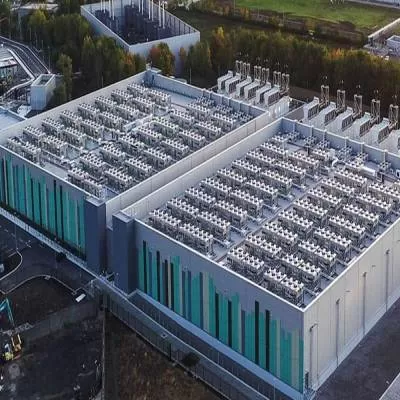- Home
- Real Estate
- Home Safe Home!
Home Safe Home!
Engineer Jagvir Goyal tells us about the latest safety equipment on the market.
With instances of burglary increasing steadily in cities across India, it has become imperative to take necessary measures that go beyond traditional locks and levers. Today, making your home threat-proof requires a combination of security features and procedures as well as the best electronic equipment.
Basic security features
You need to provide for certain security features at the time of the construction of your home, as follows:
- Steel grills in all windows and ventilators. Large glass windows are quite unsafe unless they have highly toughened or burglar-proof glass, which is expensive
- Single panel, minimum 40 mm thick, solid wood external doors - they are hard to break
- Tower bolts at the top and bottom on the inner side of all external doors. In addition, latch bolts on doors. Provide tower bolts on the inner side of wire mesh doors too. All bolts can be locked when you leave the house
- Avoid a conventional sliding bolt on the main door - a hanging lock is an invitation to burglars. Fit a lock that can be operated from inside and outside and does not indicate whether anybody is home or not
- Electronic security for the house with electric wiring for safety gadgets
- A one-way, wide-angle magic eye to the main door to check who’s outside
- No entry to the main house through the servant quarters. Such an entry is the easiest to break into.
Safety equipment
Safety equipment can be divided into access control, intruder detection, remote video surveillance, fire detection, intelligent building management and perimeter protection equipment.
Access control equipment
This controls the entry of unauthorised people in a building. Smart cards and biometrics can be used to grant entry to an individual to the premises. A biometric system can enable face or finger recognition. Biometric readers use advanced silicon capacitive imaging in fingerprint sensors. The verification time in these readers is just three seconds. These are highly reliable as there is a false acceptance rate of just one in 100,000. The false rejection rate is also satisfactory at one in 1,000. These operate on simple 9-12 V DC and are equipped with an LCD display.
Intruder detection equipment
Intruder detection equipment activates an alarm whenever there is an attempt to intrude or commit a burglary. The system helps communicate a signal to the property owner or the central monitoring system of the security equipment provider, who can swing into action by alerting the police and neighbours.
Remote video surveillance equipment
Remote video surveillance equipment enables video viewing of a building’s premises during occupation or while being away. It can make video recordings too and uses a variety of communication networks including the internet and telephony.
Closed-circuit TV (CCTV) equipment includes cameras, lenses, digital video recorders, monitors, tilt units and video management systems for live as well as recorded surveillance. Cameras are dome or box type in colour or black and white. The focal length of the lenses is determined after knowing the field of view of the camera. In constant light, fixed manual lenses are used while in varying light, automatic iris lenses are used to adjust image clarity as per available light. Zoom lenses are used when field of view varies. The video recorders provided with CCTVs have a battery backup of 30 days or so. Thus, long trips away from the premises can be well covered and recorded.
As multiple cameras are used by CCTV, an instantaneous picture can be retrieved along with date, time and camera number as and when required. Recording speeds are high and record storage can be compressed to free more storage space. Motion detection zone set-up can help in automatic recording of moving objects. Split screens are often available for view, their number ranging from one to 16. CCTVs are password protected and data can be accessed only by the user. The images are of high resolution. Monitors can be colour or black and white with screen sizes up to 15”.
Fire detection equipment
Fire detection equipment uses a number of sensors that get activated upon detecting smoke, gas or heat. Fire detection equipment can be integrated with fire suppression equipment or a fire fighting system for timely control of fire. Wet and dry sprinkler systems and Argon-like suppression gas equipment can be activated through this system.
Fire alarm systems include conventional fire alarm panels and fire detectors, analogue addressable fire panels, LCD panels and analogue addressable detectors. The detectors are activated within 30 seconds when the airflow temperature goes up by 30° centigrade above the room temperature. Activation time depends on whether the airflow is normal or horizontal with respect to the detector. The detectors are photoelectric and photo thermal. The sprinkler system is a wet and dry clean gas sprinkler system. Fire detection equipment can be integrated to the computer to identify the exact location of the breakout and its spread. It can also be integrated with the CCTV.
Intelligent building management equipment
As the name suggests, this equipment helps in intelligent management of all building systems by integrating them through an electronic network facility. All intelligent devices installed in the building can communicate to one another and synchronise their working.
Perimeter protection equipment
This equipment helps protect the perimeter of a building’s fence through sensors installed along the fence and prevents any intrusions or encroachments. Any such attempts are stopped immediately through timely alerts to the property owner as well as a non-fatal shock to the intruder. The equipment consists of sensors, sensor cables, microprocessor-based electronic control system, and alarm devices. It can be integrated with the CCTV for fence or perimeter monitoring.
Home safety equipment
The above equipment can be divided into two categories: the one that is useful when the house owner is in and the one that is effective when the house owner is out.
When you are in
Video door phones: When feeling unsafe about opening the main door without knowing who is knocking, hands-free video door phones prove useful. Through the video door phone, you can view the person standing outside and talk to him before opening the door. Video phones provide a view of different radii of the area outside. The one covering 25 ft radius or more eliminates any chance of a visitor hiding himself. Video door phones can provide both colour as well as black-and-white pictures of the visitor. Zicom and Godrej are reputed manufacturers of video door phones.
CCTV: Installation of a CCTV system in your house may look odd but once installed, residents become fond of it. It has mono or colour cameras and can show live or recorded activities of the area in and around one’s house. It includes cameras, lenses, digital video recorders and monitors.
Emergency switch: An emergency or panic switch can be installed at a convenient and accessible place. When pressed, it will convey the alarm to pre-fed phone numbers and email addresses.
Glass break detectors: These are installed on window panes and sense a shock or break and sound an alarm to alert the occupants of the building.
When you are out
Sensors and control panel system: A number of sensors are installed in the house to send messages to a microprocessor-based control panel through wiring. On receiving the signal, the control panel, if ‘on’, activates an alarm loud enough to alert the neighbours as well as automatically dials the pre-fed numbers of the police station and your mobile number. Security equipment suppliers offer glass break sensors for windows and glass doors, motion sensors to detect movement, contact sensors for doors, smoke detection sensors, fire sensors, gas detection sensors and water sensors to detect flooding or leakages. Choice of sensors can be made as per the requirements of a house. In case the wiring hasn’t been done for the system, you can even choose a wireless system that is now available. When there are frequent power failures or chances of burglars cutting off the power supply of a house, a built-in rechargeable battery can run the system.
Remote control: Certain security solution companies provide a remote control that can switch on or off all electric appliances. It can also enable or disable all or some of the selected sensors.
Biometric locks: A biometric lock, though more expensive, unlocks only when the pre-fed fingerprints are run over it. Such locks can memorise about 100 fingerprints. The lock also initiates an alarm if an unauthorised person tries to unlock it. Locks with PIN are also available but are less safe as an intruder may choose the right PIN. Biometric locks have a false rejection rate of one in 1,000 and a false acceptance rate of one in 100,000, making them very reliable.
Internet video camera: This camera, also called wireless Internet video, can send residents a live audio-video of activities in a house via the Web. An Internet video camera has its own web server and can connect directly to a network. A home network is created, to which this camera is connected. Thereafter, anything happening in the house is visible to the owners anywhere in the world.
The manufacturers
Though many home safety equipment suppliers are now in the market, Zicom and Godrej have proved to be leaders by providing a variety of systems, customising them to the needs of the individual, and integrating and monitoring them through central monitoring stations. Reliability and quality are also ensured. They have devised special systems for the safety of homes and commercial and industrial premi-ses. Zicomhome is an electronic home security system devised by Zicom that provides insurance, warranty and 24X7 connection to its central monitoring station. Zicom Electronic Security System Ltd, Mumbai, has now merged with Schneider Electric for further security and safety equipment deals.
Micro Technologies is a highly active home safety equipment supplier these days and customises safety equipment as per the requirements of the user. Mumbai-based Micro Home Security Solutions (HSS) provides two packages - Elite and Premium - for home security that mainly includes door, gas and fire sensors and sends SMS alerts to users. Blue Beacons, a Punjab-based security solutions provider, provides separate security packages for banks, hotels, commercial complexes, hospitals, public utilities, religious places, corporate offices and residential buildings.
Engineer Jagvir Goyal tells us about the latest safety equipment on the market. With instances of burglary increasing steadily in cities across India, it has become imperative to take necessary measures that go beyond traditional locks and levers. Today, making your home threat-proof requires a combination of security features and procedures as well as the best electronic equipment. Basic security features You need to provide for certain security features at the time of the construction of your home, as follows: Steel grills in all windows and ventilators. Large glass windows are quite unsafe unless they have highly toughened or burglar-proof glass, which is expensive Single panel, minimum 40 mm thick, solid wood external doors - they are hard to break Tower bolts at the top and bottom on the inner side of all external doors. In addition, latch bolts on doors. Provide tower bolts on the inner side of wire mesh doors too. All bolts can be locked when you leave the house Avoid a conventional sliding bolt on the main door - a hanging lock is an invitation to burglars. Fit a lock that can be operated from inside and outside and does not indicate whether anybody is home or not Electronic security for the house with electric wiring for safety gadgets A one-way, wide-angle magic eye to the main door to check who’s outside No entry to the main house through the servant quarters. Such an entry is the easiest to break into. Safety equipment Safety equipment can be divided into access control, intruder detection, remote video surveillance, fire detection, intelligent building management and perimeter protection equipment. Access control equipment This controls the entry of unauthorised people in a building. Smart cards and biometrics can be used to grant entry to an individual to the premises. A biometric system can enable face or finger recognition. Biometric readers use advanced silicon capacitive imaging in fingerprint sensors. The verification time in these readers is just three seconds. These are highly reliable as there is a false acceptance rate of just one in 100,000. The false rejection rate is also satisfactory at one in 1,000. These operate on simple 9-12 V DC and are equipped with an LCD display. Intruder detection equipment Intruder detection equipment activates an alarm whenever there is an attempt to intrude or commit a burglary. The system helps communicate a signal to the property owner or the central monitoring system of the security equipment provider, who can swing into action by alerting the police and neighbours. Remote video surveillance equipment Remote video surveillance equipment enables video viewing of a building’s premises during occupation or while being away. It can make video recordings too and uses a variety of communication networks including the internet and telephony. Closed-circuit TV (CCTV) equipment includes cameras, lenses, digital video recorders, monitors, tilt units and video management systems for live as well as recorded surveillance. Cameras are dome or box type in colour or black and white. The focal length of the lenses is determined after knowing the field of view of the camera. In constant light, fixed manual lenses are used while in varying light, automatic iris lenses are used to adjust image clarity as per available light. Zoom lenses are used when field of view varies. The video recorders provided with CCTVs have a battery backup of 30 days or so. Thus, long trips away from the premises can be well covered and recorded. As multiple cameras are used by CCTV, an instantaneous picture can be retrieved along with date, time and camera number as and when required. Recording speeds are high and record storage can be compressed to free more storage space. Motion detection zone set-up can help in automatic recording of moving objects. Split screens are often available for view, their number ranging from one to 16. CCTVs are password protected and data can be accessed only by the user. The images are of high resolution. Monitors can be colour or black and white with screen sizes up to 15”. Fire detection equipment Fire detection equipment uses a number of sensors that get activated upon detecting smoke, gas or heat. Fire detection equipment can be integrated with fire suppression equipment or a fire fighting system for timely control of fire. Wet and dry sprinkler systems and Argon-like suppression gas equipment can be activated through this system. Fire alarm systems include conventional fire alarm panels and fire detectors, analogue addressable fire panels, LCD panels and analogue addressable detectors. The detectors are activated within 30 seconds when the airflow temperature goes up by 30° centigrade above the room temperature. Activation time depends on whether the airflow is normal or horizontal with respect to the detector. The detectors are photoelectric and photo thermal. The sprinkler system is a wet and dry clean gas sprinkler system. Fire detection equipment can be integrated to the computer to identify the exact location of the breakout and its spread. It can also be integrated with the CCTV. Intelligent building management equipment As the name suggests, this equipment helps in intelligent management of all building systems by integrating them through an electronic network facility. All intelligent devices installed in the building can communicate to one another and synchronise their working. Perimeter protection equipment This equipment helps protect the perimeter of a building’s fence through sensors installed along the fence and prevents any intrusions or encroachments. Any such attempts are stopped immediately through timely alerts to the property owner as well as a non-fatal shock to the intruder. The equipment consists of sensors, sensor cables, microprocessor-based electronic control system, and alarm devices. It can be integrated with the CCTV for fence or perimeter monitoring. Home safety equipment The above equipment can be divided into two categories: the one that is useful when the house owner is in and the one that is effective when the house owner is out. When you are in Video door phones: When feeling unsafe about opening the main door without knowing who is knocking, hands-free video door phones prove useful. Through the video door phone, you can view the person standing outside and talk to him before opening the door. Video phones provide a view of different radii of the area outside. The one covering 25 ft radius or more eliminates any chance of a visitor hiding himself. Video door phones can provide both colour as well as black-and-white pictures of the visitor. Zicom and Godrej are reputed manufacturers of video door phones. CCTV: Installation of a CCTV system in your house may look odd but once installed, residents become fond of it. It has mono or colour cameras and can show live or recorded activities of the area in and around one’s house. It includes cameras, lenses, digital video recorders and monitors. Emergency switch: An emergency or panic switch can be installed at a convenient and accessible place. When pressed, it will convey the alarm to pre-fed phone numbers and email addresses. Glass break detectors: These are installed on window panes and sense a shock or break and sound an alarm to alert the occupants of the building. When you are out Sensors and control panel system: A number of sensors are installed in the house to send messages to a microprocessor-based control panel through wiring. On receiving the signal, the control panel, if ‘on’, activates an alarm loud enough to alert the neighbours as well as automatically dials the pre-fed numbers of the police station and your mobile number. Security equipment suppliers offer glass break sensors for windows and glass doors, motion sensors to detect movement, contact sensors for doors, smoke detection sensors, fire sensors, gas detection sensors and water sensors to detect flooding or leakages. Choice of sensors can be made as per the requirements of a house. In case the wiring hasn’t been done for the system, you can even choose a wireless system that is now available. When there are frequent power failures or chances of burglars cutting off the power supply of a house, a built-in rechargeable battery can run the system. Remote control: Certain security solution companies provide a remote control that can switch on or off all electric appliances. It can also enable or disable all or some of the selected sensors. Biometric locks: A biometric lock, though more expensive, unlocks only when the pre-fed fingerprints are run over it. Such locks can memorise about 100 fingerprints. The lock also initiates an alarm if an unauthorised person tries to unlock it. Locks with PIN are also available but are less safe as an intruder may choose the right PIN. Biometric locks have a false rejection rate of one in 1,000 and a false acceptance rate of one in 100,000, making them very reliable. Internet video camera: This camera, also called wireless Internet video, can send residents a live audio-video of activities in a house via the Web. An Internet video camera has its own web server and can connect directly to a network. A home network is created, to which this camera is connected. Thereafter, anything happening in the house is visible to the owners anywhere in the world. The manufacturers Though many home safety equipment suppliers are now in the market, Zicom and Godrej have proved to be leaders by providing a variety of systems, customising them to the needs of the individual, and integrating and monitoring them through central monitoring stations. Reliability and quality are also ensured. They have devised special systems for the safety of homes and commercial and industrial premi-ses. Zicomhome is an electronic home security system devised by Zicom that provides insurance, warranty and 24X7 connection to its central monitoring station. Zicom Electronic Security System Ltd, Mumbai, has now merged with Schneider Electric for further security and safety equipment deals. Micro Technologies is a highly active home safety equipment supplier these days and customises safety equipment as per the requirements of the user. Mumbai-based Micro Home Security Solutions (HSS) provides two packages - Elite and Premium - for home security that mainly includes door, gas and fire sensors and sends SMS alerts to users. Blue Beacons, a Punjab-based security solutions provider, provides separate security packages for banks, hotels, commercial complexes, hospitals, public utilities, religious places, corporate offices and residential buildings.
























